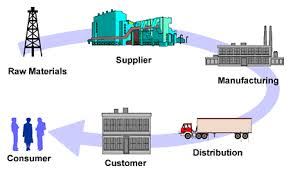Metaphor Mapping has been central to global supply chain optimization programs in two of the world’s largest chemical companies. Workshops have typically included 15-25 participants from around the world and resulted in changing sources of supply, management of shipping and logistics and reduction of inventory. The Mapping workshops have proven most valuable because of the novel ideas they generated, their ability to get all participants on the same page and committed to implement the changes.
Most supply chains are Robust, Yet Fragile—that is, they are very robust when it comes to dealing with their design criteria but fragile, when it comes to the unanticipated. Companies may be able to limp along following one disruption, but when it’s followed by another, client and investor confidence drops like a stone— witness the aircraft manufacturer EADS. When they announced a supply-caused delay on a new aircraft in 2011, their stock dropped 2%. When they announced another disruption 6 months later, the stock dropped 26% in a single day.
Resiliency is the ability of a supply chain to return to its original state after a major disruption. The Resiliency Review brings your stakeholders together for focused conversation and analysis. In an energizing three hours, your team is guided to map vulnerabilities, capacities to respond and priorities. No company can study and invest in mitigating every imaginable risk. We recommend performing a brief Resiliency Review each time a component of the supply chain in changed in a major way or once per year.
Resiliency Indicators Addressed
- Disruption scenario alternatives are examined as part of regular review of vulnerabilities and definition of mitigation plans
- Customer and financial impact of scenarios is evaluated
- Leading indicators and triggers for potential disruptions are identified and monitored
- Crisis information paths are in place with government agencies
- Crisis communications are integrated across supply lines
- A culture of risk management and an alert/warning system is in place with suppliers
- Redundancy of critical functions and supply lines is in place where risk justified
- IT disaster prevention and recovery plan is in place
- Business operations continuity plan is in place
- Trade resumption plan is in place
- A plan is in place to identify and eliminate supply chain bottlenecks after a disruption
- Exercises are budgeted and have been performed to stress test assumptions and plans
